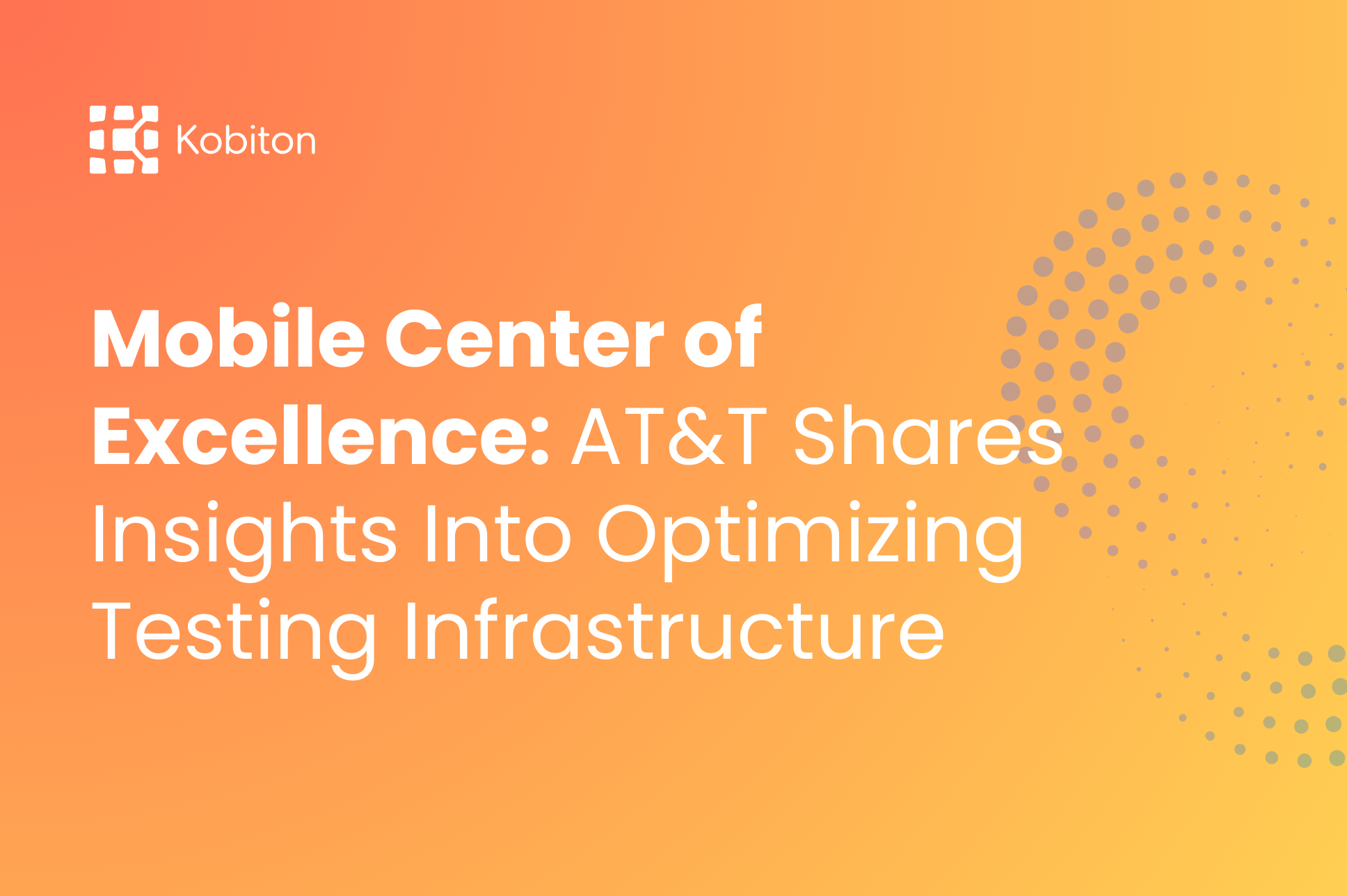
Mobile Center of Excellence: AT&T Shares Insights Into Optimizing Testing Infrastructure

Matt Klassen
At Kobiton’s recent Mobile Testing & Experience Summit, Joe Colantonio was on hand to discuss his more than 25 years of experience in software automation testing. As the founder of Test Guild and the creator of the annual Automation Guild event – not to mention his hundreds of hours of live online events for some of the biggest companies in the software testing space – it’s safe to say that Joe knows a thing or two about software QA.
What you might not realize? Joe also knows a thing or two about farming, and was eager to share some examples of how life on his hobby farm can provide teachable moments that apply to software testing. Curious? I was too.
Below are a few highlights from his presentation. To watch MTES on demand, click here.
“About four years ago, I decided to sell everything I had in Rhode Island, and start fresh on a hobby farm in east Tennessee,” he told us.
Colantonio then told us he’d be sharing some of the concepts from his new book, Automation Awesomeness: 260 actionable affirmations to improve your QA and automation testing skills. To do so, he explained, he’d be touching on lessons learned from that hobby farm, as well as some key concepts that can help the career of any software testers.

“I want to share with you the PIGS framework,” Colantonio began, with a smile. (PIGS representing: Planning, Initiate, Go, Streamline.)
“In the first phase of the PIGS framework [planning], think about the GOATS method: Get the whole team involved, Operationalize a framework, Anticipate & set expectations, Testability, and Select the right tools,” he said.
Colantonio then continued, with another farming anecdote, this one including his wife Shale.
“On a hobby farm,” he told us, “you really need someone that knows all the animals, what their needs are, that can tell you, here’s the food they should be fed, this is when they should be fed, this is how you clean up all the stalls, this is when they need their shot. Without my wife,” he said, “this wouldn’t happen. She’s pretty much the architect of the farm.”
“But this is one thing that drives me nuts and where I see a lot of teams fail,” he said. “They try to build their own frameworks, their own solutions rather than looking to see if there is a vendor-based tool that already has it packaged and ready for them to go.”
This can relate, in many ways, to how organizations approach testing.

“Especially if you have a team full of testers, not necessarily developers. Or, even if you have developers, they don’t necessarily know how to create a framework that’s gonna be successful to help you with automation.”
Colantonio shared another example of how farm life compares to the world of QA.
“Here’s what happened when we didn’t think through our plans, and we said yes to adopting a calf. That’s similar to a team jumping at selecting a tool or process before really thinking it through,” he explained.
“Keep in mind,” he stressed, “neither of us were raised on a farm. Both grew up in a city, and we had no idea what taking care of a cow would involve. But we fell in love with this calf. We fed it with a bottle; we built her a makeshift stall. Beatrice (that’s her name) was cute, intelligent, and we sometimes wondered if she believed herself to be a dog rather than a cow. She also loved kids! Every time my nephew and niece would visit, people would run up to it, excited, and wanted to play with it, to everyone’s amusement.
“The problem was Beatrice grew. And grew, and grew. The once-cute playfulness turned dangerous as B’s weight shot up to about 500 pounds — especially to my young niece and nephew, when a 500-pound cow was trying to play with them.
“Adding to our problem – because we never planned to get livestock – my property wasn’t fully fenced. This became an open invitation for Bea to occasionally wander off our property into the streets and really become a nuisance to our neighbors.”
Beatrice was testing both independence and dependencies — just as you should with testing software.

It was clear Colantonio and his wife lacked the infrastructure to accommodate a full-grown cow. “Selling Bea was out of the question,” he says, today. “She was a pet. And not destined into the slaughterhouse for someone to eat. Luckily, we found a rancher seeking a cow for breeding with his bulls. He promised not to eat her, and we could be comforted by the thought that she would have a fitting home.
“So what does this have to do with automation? Well, as I mentioned, the point is to be careful before choosing a tool,” he told the group. “We chose an animal for our farm without looking at our situation or even seeing if it actually made sense for us to have a cow.”

Colantonio stresses the importance of continued learning, and has said, “If you’re a tester, staying current and up to date on your skills is important. Make an effort to try out different tools and techniques to keep your knowledge current, he advises.
“Experiment with new tools and techniques during your 9-to-5 job, or create personal projects in your free time.”
Joe Colantonio is the founder of Test Guild, a host of the longest-running podcast on automation testing, has interviewed over 400 industry leaders, and is the creator of Automation Guild, the premium, annual online event for test automation engineers. He’s the author of Automation Awesomeness: 260 actionable affirmations to improve your QA and automation testing skills.
Check out our previous MTES recaps: